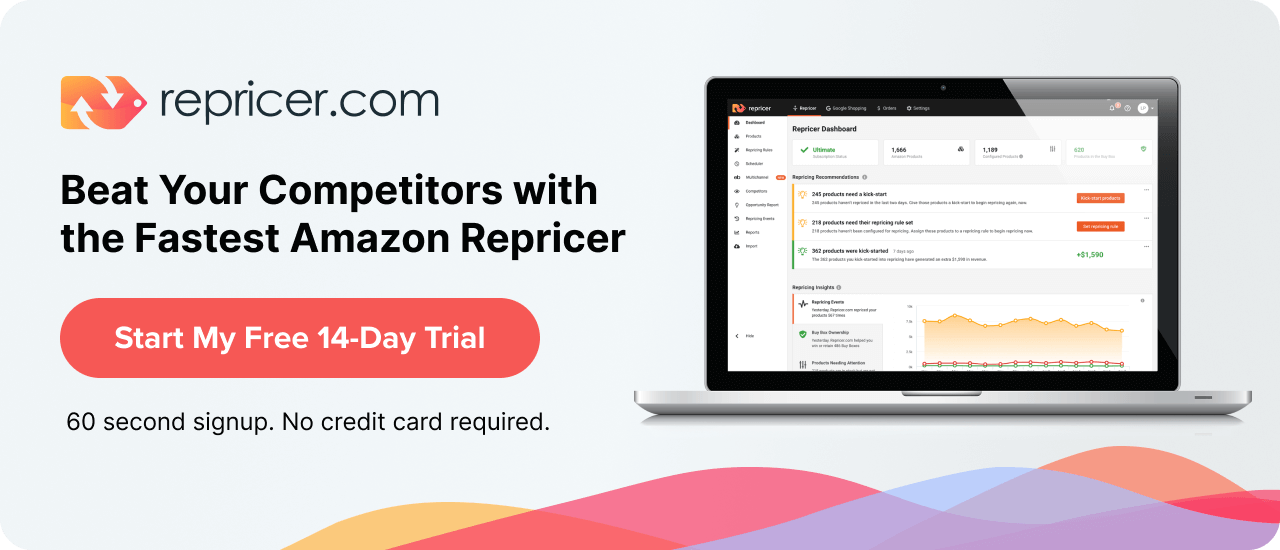Learn more about Amazon inventory sourcing in this great guest post by top Amazon seller Stephen Smotherman (Full-Time FBA)
During just one week (or even a day!), it is possible to come across thousands of items you could potentially resell on Amazon. Obviously, not all those items are going to make the cut and end up in your shopping cart. Some items are a no-brainer purchase. Some are definitely NOT something you should buy for resale. And some items are kind of iffy – should you buy it or not?
How do you know whether to buy an item or just pass and move on to the next item? For the rest of this article, I want to talk with you about how to find profitable inventory to sell on Amazon – more specifically, I want to show you my thought process when I’m deciding whether or not to buy an item.
First things first: I want to make sure you are using the right tools when you are sourcing. When I am doing retail arbitrage (RA), I always use the Scoutify app on my smartphone to scan inventory and see all the necessary numbers to make a smart sourcing decision:
- Sales rank
- Price
- Fees
- Profit
- Number of competitors
- Historical sales rank and pricing
Some sellers choose to use only the Amazon Seller app for doing RA, but I have found the info it returns to be incomplete. I prefer more information at my fingertips when I make a sourcing decision, so I use the Scoutify app that comes bundled with the Amazon seller software Inventory Lab.
OK, now that we have that covered, let’s look at my thought process when I’m making a sourcing decision. This process works whether you are doing RA, OA, wholesale purchasing, or any other type of sourcing for Amazon FBA.
I typically ask myself four main questions when I’m making an Amazon inventory sourcing decision.
1. What is the Return on Investment (ROI)?
We’re all in this business to make money, so we want to make sure the items we’re sourcing have a good ROI. When you are first starting out at Amazon FBA, I recommend finding items that have a 100% ROI. If you have a higher percentage ROI, you have a lot more wiggle room to make some mistakes and adjust your price if necessary.
As you gain more experience and confidence, you can begin sourcing items that have a lower ROI. Some sellers stick with 75% and above, while others stick with 50% or above. If you find an item that will sell very quickly, you can even go as low as 30% ROI.
The main point here is to find items that have a good ROI, whatever the parameter is that you’ve set. If you can’t make money on your investment, you want to move on and look for different inventory items.
2. Am I Approved to Sell the Item?
Some categories are gated for certain sellers, and some brands are restricted to sellers. The second thing I look at when I’m making a sourcing decision is whether I am approved to sell an item. If I can’t sell it, there’s no point in continuing to consider it. You can see whether you are approved to sell an item from within the Amazon Seller app, but Scoutify also has a link to show you whether or not you are restricted for the item.
3. What is the Sales Rank?
The sales rank of an item is how I can tell whether or not the item will sell quickly on Amazon. Amazon tells us the current Amazon best sellers rank of every item in their catalogue, and we can see that information when we scan an item with a sourcing app.
You want to make sure, though, that you are considering the average sales rank when you make a sourcing decision, not just the current sales rank. Amazon updates sales rank frequently throughout the day, so you need to know how much that sales rank varies over time.
You can look at graphs on CamelCamelCamel and Keepa to figure out the average sales rank in a glance; both Camel and Keepa have quick links through the Scoutify sourcing app.
I recommend checking out an Amazon sales rank chart to make sure you know what is a low or high sales rank for the category of the item you are looking at. Our blog offers a monthly updated sales rank chart for subscribers. You can use the chart to see if an item’s average sales rank falls in the top 1%, 3%, 5%, 10%, or higher for its category.
I make my sourcing decision based on how high or low the sales rank of the item is. If an item has a low average sales rank, it is a faster selling item. If the average sales rank is high, the item will sell more slowly.
4. What is the Competition?
Unless no one else is selling a particular item, you are going to have competition if you sell that item. There are two main competitors you need to consider: Amazon and other third-party sellers. When it comes to competing with Amazon, I generally choose not to buy items that Amazon sells. I always look to see if Amazon is in stock on an item or has been in stock recently. If so, I typically pass on that item unless I can price it significantly lower than Amazon.
Generally, Amazon does not tend to share the Buy Box, and since the Buy Box is where over 82% of Amazon sales come from, I don’t want to risk buying inventory where I will never have a chance to get that Buy Box. To see the history of Amazon being in stock or out of stock on an item, I check the Keepa graph for the item through the Scoutify app.
I also like to look at the other third-party sellers who are priced competitively on the item. I’m only interested in those sellers who are priced within 1% or 2% of the buy box price. Anyone priced higher than that isn’t truly going to be my competition. I want to make sure there’s a relatively low number of sellers priced competitively so that I can be assured of getting time in the Buy Box.
The higher the sales rank, the fewer competitors I want on the item. If the sales rank is lower, I am more willing to tolerate a relatively higher number of competitors – with a low sales rank, the item will be selling fast enough that I can still get time in the Buy Box and make my sales.
Final Thoughts
Those are my four main deciding factors when I am making a buying decision for my Amazon FBA business. As with anything, there are some exceptions that come up when I’m looking at this criterion. The more comfortable you are with your experience at making these decisions, the more you will be able to see when there are exceptions to the buying parameters you set up for yourself.
There are other less important factors I sometimes consider, as well, such as the number of reviews and whether or not they are positive. I tend to use other factors in my decisions when I’m on the fence about a buy.
Related: 7 Amazon Product Research Tactics You Need in 2023
Stephen Smotherman loves his job. He has been using Amazon FBA since 2011 and has been able to completely support himself and his family almost from the beginning. On his fantastic FBA blog, he talks about what it takes to make FBA a full-time job.






